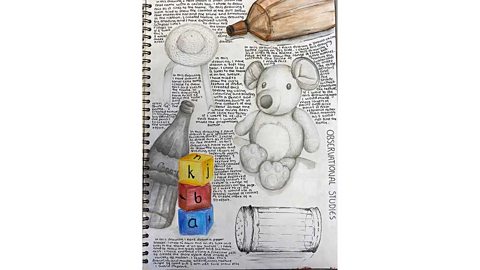Importance of observing
Drawing from direct observation involves carefully looking at the subject and noticing and recording the shapes, details and tones that you see.
Click through the slideshow to see some examples of student observational drawings:

Image caption, Observational still life studies
Image caption, An observational drawing of found objects
Image caption, Observational studies for portrait drawing
1 of 3
Drawing lines, shapes and details accurately shows an understanding of the subject. By observing objects carefully you will start to notice how our eyes make sense of:
- perspectivePerspective relates to the idea of seeing, showing or suggesting depth and the distance between the viewer and the subject.
- lines
- 2D shapes
- 3D shapes
- light and dark
Observational drawings should clearly show what you see.
Some types of drawing Čč°ù±đČÔât considered to be observational, such as:
- working from a photograph
- changing part of your subject on purpose
- drawing from your imagination
Observing the subject
Looking at the subject then at the piece of paper and back again will make drawing more accurate than trying to imagine or remember the subject.
Question
Why should you spend time looking at your subject when doing an observational drawing?
Itâs important to pay close attention to the shapes, detail and tones throughout the drawing process, not just at the beginning.